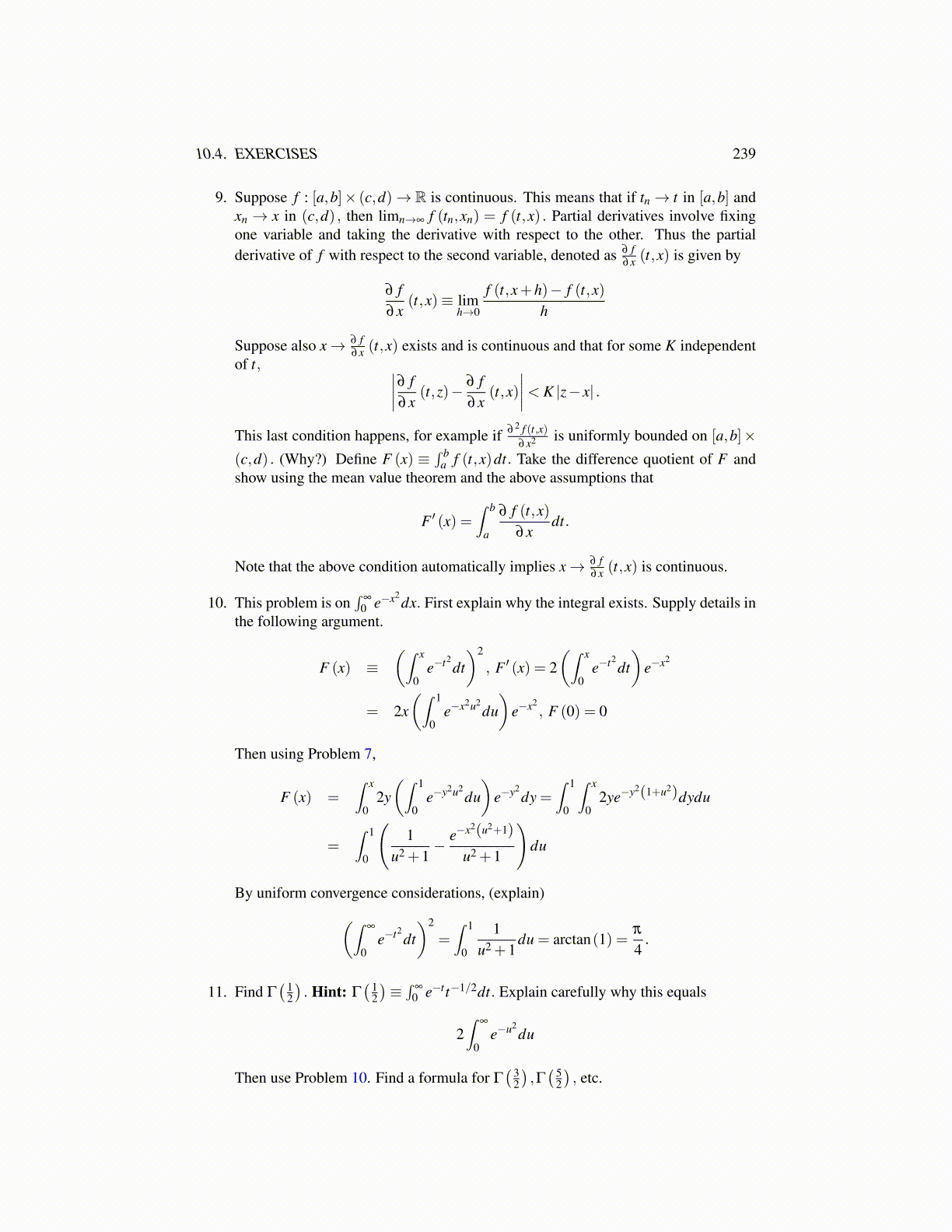
10.4. EXERCISES 239
9. Suppose f : [a,b]× (c,d)→ R is continuous. This means that if tn → t in [a,b] andxn → x in (c,d) , then limn→∞ f (tn,xn) = f (t,x) . Partial derivatives involve fixingone variable and taking the derivative with respect to the other. Thus the partialderivative of f with respect to the second variable, denoted as ∂ f
∂x (t,x) is given by
∂ f∂x
(t,x)≡ limh→0
f (t,x+h)− f (t,x)h
Suppose also x → ∂ f∂x (t,x) exists and is continuous and that for some K independent
of t, ∣∣∣∣∂ f∂x
(t,z)− ∂ f∂x
(t,x)∣∣∣∣< K |z− x| .
This last condition happens, for example if ∂ 2 f (t,x)∂x2 is uniformly bounded on [a,b]×
(c,d) . (Why?) Define F (x) ≡∫ b
a f (t,x)dt. Take the difference quotient of F andshow using the mean value theorem and the above assumptions that
F ′ (x) =∫ b
a
∂ f (t,x)∂x
dt.
Note that the above condition automatically implies x → ∂ f∂x (t,x) is continuous.
10. This problem is on∫
∞
0 e−x2dx. First explain why the integral exists. Supply details in
the following argument.
F (x) ≡(∫ x
0e−t2
dt)2
, F ′ (x) = 2(∫ x
0e−t2
dt)
e−x2
= 2x(∫ 1
0e−x2u2
du)
e−x2, F (0) = 0
Then using Problem 7,
F (x) =∫ x
02y(∫ 1
0e−y2u2
du)
e−y2dy =
∫ 1
0
∫ x
02ye−y2(1+u2)dydu
=∫ 1
0
(1
u2 +1− e−x2(u2+1)
u2 +1
)du
By uniform convergence considerations, (explain)(∫∞
0e−t2
dt)2
=∫ 1
0
1u2 +1
du = arctan(1) =π
4.
11. Find Γ( 1
2
). Hint: Γ
( 12
)≡∫
∞
0 e−tt−1/2dt. Explain carefully why this equals
2∫
∞
0e−u2
du
Then use Problem 10. Find a formula for Γ( 3
2
),Γ( 5
2
), etc.